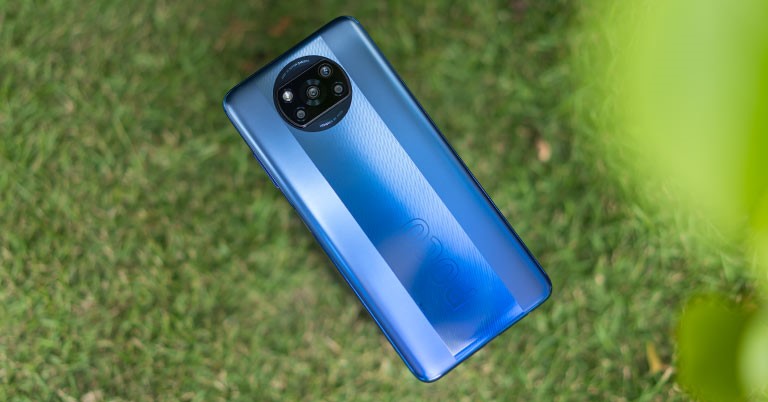
POCO’s entire legacy is built on delivering exceptional value smartphones—so much so that the company has practically stolen the “flagship killer” crown from OnePlus. Well, OnePlus is equally to blame in this regard but that’s a topic for another video. Anyway, POCO recently launched the X3 Pro, debuting a flagship-grade chipset and a very familiar design. With everything that the phone is packing, is it the best phone in its range? Let’s find out in this review of the POCO X3 Pro.
POCO X3 Pro Specifications:
- Body: 76.8 x 165.3 x 9.4mm, 215 gm, IP53 dust/splash resistant
- Display: 6.67-inches IPS LCD “DotDisplay”, 120Hz refresh rate, 240Hz touch sampling rate, Corning Gorilla Glass 6, 450 nits brightness
- Resolution: FHD+ (2400 x 1080 pixels), 20:9 aspect ratio, 395 PPI
- Chipset: Qualcomm Snapdragon 860 (7nm Mobile Platform)
- CPU: Octa-core (1×2.96 GHz Kryo 485 Gold & 3×2.42 GHz Kryo 485 Gold & 4×1.78 GHz Kryo 485 Silver)
- GPU: Adreno 640
- Memory: 6/8GB LPDDR4X RAM, 128/256GB UFS 3.1 storage (expandable)
- Software & UI: Android 11 with Xiaomi’s MIUI 12 for POCO on top
- Rear Camera: Quad-camera;
– 48MP f/1.79 primary lens, AF
– 8MP f/2.2 ultra-wide lens, 119º FOV
– 2MP f/2.4 macro sensor, 4CM (fixed focus)
– 2MP f/2.4 depth sensor - Front Camera: 20MP f/2.2 sensor (punch-hole cutout)
- Audio: Stereo speakers with Hi-Res Audio, 3.5mm headphone jack
- Security: Side-mounted fingerprint sensor, Face unlock
- Sensors: Accelerometer, Gyro, Proximity, Ambient Light, Electronic Compass, IR blaster
- Connectivity: Hybrid Dual-SIM (Nano), WiFi 802.11 a/b/g/n/ac (Dual-band), Bluetooth 5.0, GPS / AGPS / Glonass / Galileo / Beidou, NFC, USB Type-C, 4G LTE
- Battery: 5160mAh with 33W fast charging (33W adapter provided)
- Color options: Phantom Black, Metal Bronze, Frost Blue
- Price in Nepal: Rs. 32,000 (6/128GB) | Rs. 37,000 (8/256GB)
POCO X3 Pro Review:
Design & Build
- 76.8 x 165.3 x 9.4mm, 215 grams
- Glass front, plastic back, plastic frame
- IP53 dust and splash-resistant
Like I said earlier, the POCO X3 Pro is no stranger to the eyes. In fact, it bears the same visual aesthetics, form-factor, and everything else as the POCO X3 NFC. While we’re obviously on board with the company’s original design practices, reusing one that wasn’t as well-received feels like a misplaced trust here.
So yeah—it’s not the most comfortable phone to have in your pocket or your hand. Weighing 215 grams with a 9.4mm thickness, the POCO X3 Pro is definitely not for those who prefer a compact device. That’s not to say that the phone has downright terrible ergonomics, absolutely not. With all the other phones I’ve had for review this year, I personally found myself used to the build quality of POCO X3 Pro almost right away.
The weight distribution sure could’ve some work though since the lower half of the phone feels relatively heavier than the upper half. Regardless, the curved sides do help things a bit, and ooh—contrary to the all-glossy finish in its predecessor, POCO has implemented a matte look on the sides here.
Protected against dust or splashes
Moving on, the phone is IP53 certified against dust and splashes as well. That’s nice. Because of the borrowed design, X3 Pro has a plastic back and plastic frames which might feel a bit out of place for a phone that boasts a Snapdragon 860 chipset inside. In any case, it doesn’t catch fingerprints or smudges as much although the camera does result in slight wobbles when placed on a flat surface.
POCO X3 Pro has a power button on the side that doubles as a fingerprint sensor. It is easy to reach and unlocks the phone in a flash—unless your finger is sweaty or a little wet that is. Just above it is the volume rockers that click well and are fairly easy to reach too.
Similarly, the left frame holds the hybrid SIM slot that accepts two nano SIMs or one SIM and a MicroSD card. Finally, the top frame gets an IR blaster and a microphone whereas you’ll find a headphone jack, a USB-C port, another microphone, and the bottom-firing speaker grille on the bottom.
Display
- 6.67-inches FHD+ IPS LCD display
- 120/240Hz refresh/touch sampling rate
- Corning Gorilla Glass 6 protection
Coming to the front, you’re greeted with the same 6.67-inch IPS LCD screen—now protected by Corning’s Gorilla Glass 6 instead of Gorilla Glass 5 on the POCO X3 NFC. The same display means X3 Pro also has a 120Hz refresh rate and a 240Hz touch sampling rate. Moreover, this screen embeds the company’s DynamicSwitch technology which switches the refresh rate between 50Hz, 60Hz, 90Hz, and 120Hz when selecting the High refresh rate mode.
And this was one of the major complaints many users had with POCO X3 NFC’s promised 120Hz smoothness—or rather its imperfection. POCO isn’t the first company to offer a dynamic refresh rate on its phones and we haven’t really noticed such inconsistency when a screen automatically toggles between different refresh rates on other phones till now.
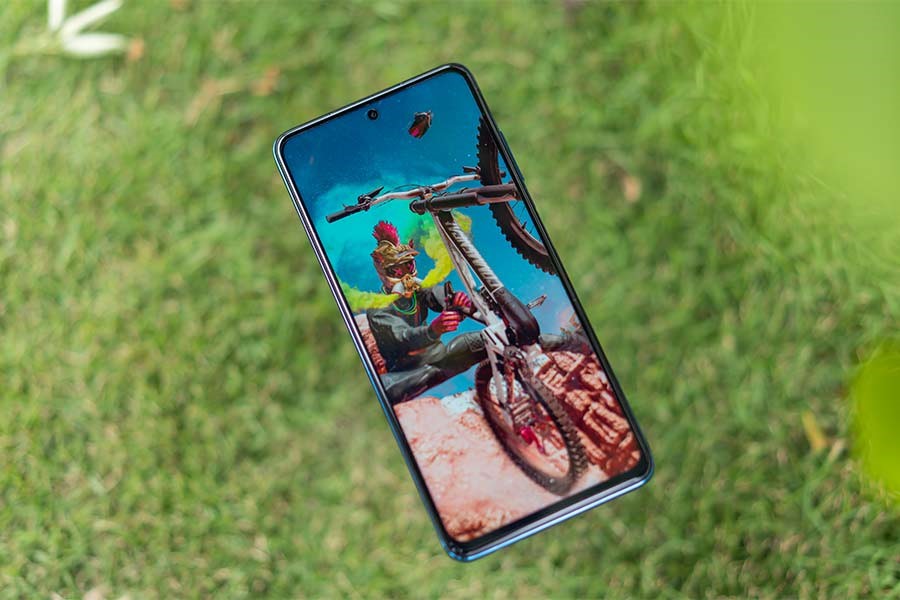
Unfortunately, POCO’s implementation still leaves room for complaint as we could still notice micro-lags every now and then, especially when scrolling through the UI rather fast. We presumed this was happening on the X3 NFC because of its relatively under-powerful Snapdragon 732G chipset but this déjà vu makes us shift the blame towards the screen itself or the software optimization instead—it’s probably the former.
Besides, MIUI isn’t the most optimized Android skins out there and the “POCO” customization is almost next-to-nothing in this case. I feel like this issue could be solved simply by force enabling 120Hz refresh rate all the time so POCO’s indifference towards the issue is questionable.
Plus, turns out that it is absolutely possible since an XDA member unlocked a way to enable the 120Hz refresh rate all the time on POCO X3 NFC. But of course, you’ll need to have the phone bootloader unlocked and rooted.
Widevine L1 certified
Anyway, I’ve had no issue regarding the touch response though. Its viewing angles are pretty nice, colors pop fairly well for an LCD screen, and the punch-hole cutout is pretty minimal too. You can also stream HD videos on Netflix and other streaming sites since POCO X3 Pro’s screen is Widevine L1 certified as well. It is also HDR10 compliant but weirdly enough, the screen automatically evolves with a yellow tint when watching HDR videos on YouTube.
Stereo speakers with Hi-Res Audio
Talking about content consumption, POCO X3 Pro’s stereo speakers get plenty loud and the mids and highs sound pretty well balanced too. Yet, the bass reproduction is almost non-existent here. I’ve had no issue regarding call quality on this phone though.

Moreover, this display doesn’t get very bright either. With 450 nits of typical brightness that POCO says can get even higher with Sunlight Mode turned on, I found it to be a bit of a struggle when looking at the phone under direct sunlight.
On the other hand, it can quite dim and therefore using the phone under the sheets has been a comfortable experience. One more thing, there’s also a notification LED right above the display. While I wished it was an RGB LED instead of plain white, the mere inclusion of a notification indicator is a win for me.
Performance
- Octa-core Qualcomm Snapdragon 860 SoC (7nm)
- 6/8GB LPDDR4X RAM, 128/256GB UFS 3.1 storage (expandable)
- Android 11 with Xiaomi’s MIUI 12 for POCO on top
On to the performance side of things, POCO X3 Pro is powered by Qualcomm’s Snapdragon 860. This 7nm chipset is almost identical to 2019’s Snapdragon 855+. It reportedly has a slightly better AI engine and POCO says the 860 has a better ISP than the 855+ as well. So as you could tell, the X3 Pro is easily the best-performing phone in its price range.
Ther Snapdragon 860 here has been paired with 6/8GB of LPDDR4X RAM and up to 256GB of UFS 3.1 internal storage. With all this, my experience with the phone has been spectacular. Apps install and load quite fast and juggling through multiple apps is no hiccup here. Yet, with heavy apps or games into the mix, you will notice reloads on certain apps almost all the time. All of this boots up with MIUI 12 based on Android 11—alongside the aforementioned POCO customization.
Bloatware and ads
As expected from a Xiaomi (or Xiaomi inspired) phone, the X3 Pro comes with a couple of bloatware apps but you can choose to uninstall them. And of course, there are ads. I also feel like I should mention an obscure bug in Facebook Messenger I witnessed. For some reason, I would get text/call notifications even after I’d already tended to it the first time. Weird. Let’s now take a look at some benchmark scores:
| POCO X3 Pro | ||
| Androbench | Sequential Read | 1455.53 MB/s |
| Sequential Write | 525.39 MB/s | |
| AnTuTu v8 | Total | 489153 |
| CPU | 133679 | |
| GPU | 191850 | |
| Memory | 82680 | |
| UX | 80944 | |
| Geekbench 5 | CPU (Single Core) | N/A |
| CPU (Multi-Core) | N/A | |
| Compute (OpenCL) | N/A | |
| PCMark (Work 2.0 Performance) | 10197 | |
| 3DMark (Wild Life) | N/A | |
Those numbers read real impressive, huh? But weirdly enough, the Geekbench app kept crashing whenever I tried to get a benchmark reading whereas the 3DMark app straight up wouldn’t let me run it—citing that POCO might’ve disabled it for some reason.
Gaming experience
Nevertheless, let’s talk about the gaming performance now. Powered by the pseudo-flagship-grade Snapdragon 860, I expected an exceptional gaming experience on the POCO X3 Pro. And thankfully, the phone delivered to my expectations to the most extent. But pushing the silicon to its limit heats up the device quite fast and to quite an extreme degree.
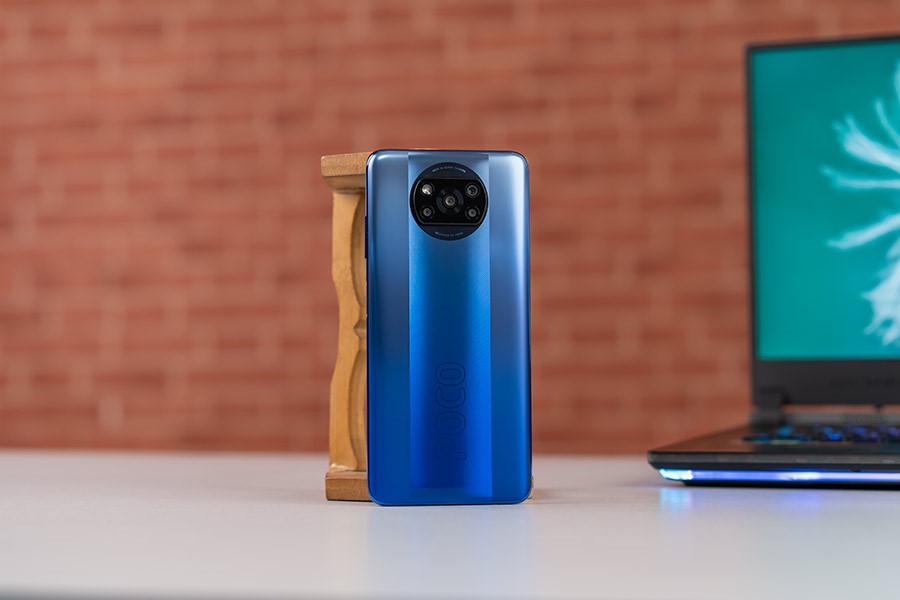
For this review, I played Genshin Impact on its highest settings on the POCO X3 Pro. This includes all the graphics variables cranked to the max like 60 fps, High visual effects, High render resolution, and Extreme motion blur. Unfortunately, the phone’s cooling solution simply couldn’t catch up under this.
I graphed its initial CPU and battery temperature at 34ºC and 31ºC which quickly rose to 68ºC and 45ºC, respectively after just 5 minutes of gameplay. The CPU temperature jumped to 71ºC after 16 minutes and at this moment, it was getting really difficult to hold the phone. To further push Snapdragon 860’s limit, I continued playing it for a little over 40 minutes where I recorded POCO X3 Pro’s maximum CPU and battery temperature at 76ºC and 46ºC, respectively.
The hand-rest area is uncomfortably hot whereas the camera module is even hotter. Gameplay in this setting, on the other hand, is fairly smooth with a stable 60fps gaming most of the time. But, I did notice minor stutters every now and then, although the performance didn’t throttle as much even when the phone got extremely hot.
Dialing it down
So, it’s more than fair to say that Genshin Impact isn’t meant to be played at its max settings on this phone. Therefore, I dialed down the settings to High graphics and 30 fps. Here, the gameplay got significantly better—especially in the thermal department. After 20 minutes, the CPU and battery temperature rose to 63ºC and 41ºC, respectively while the gameplay was relatively smoother as well. The camera module still got pretty hot but not as much when playing at the highest setting.
Likewise, comparatively less demanding titles like Call of Duty Mobile run extremely well at their max setting. I set the graphics to Very High and frame rate to Max while also turning on anti-aliasing. Under this, the gameplay was buttery smooth although the temperature got a little out of hand than I’d anticipated—but not to the uncomfortable point though. PUBG Mobile can hit HDR graphics and Extreme frame rates or Ultra HD graphics and Ultra frame rates.
Under both settings, the gameplay is fairly smooth while I did notice few stutters after around 20 minutes into the game. Finally, Shadowgun War Games, which is a 120 fps optimized title runs smoothly under Ultra High graphics and 120 fps.
All in all, POCO X3 Pro’s gaming performance is impressive although its thermal solution struggles when pushing through graphics-intensive titles. The company says it has used multi-layer graphite heat dissipating material but from my experience, that seems simply insufficient.
Cameras
- Quad-camera setup at the back
- (48MP main, 8MP ultrawide, 2MP macro, 2MP portrait)
- 20MP selfie camera inside the punch-hole cutout
Time to get to the camera portion of this POCO X3 Pro review. Surprisingly, the phone has a downgraded quad-camera setup compared to the POCO X3 NFC—in terms of megapixel count that is. Here, you get a 48MP primary and an 8MP ultrawide sensor compared to the 64MP and 13MP lens respectively on its predecessor.
Besides this, it brings the same 2MP depth, 2MP macro lens alongside a 20MP selfie camera. For this review, I compared the cameras on POCO X3 Pro against that of the Redmi Note 10 Pro Max which has a 108MP main sensor.
Normal Images
Here, the normal daytime images from the Note 10 Pro Max retain more detail and look sharper. Plus, it also produces close-to-natural colors whereas the POCO X3 Pro tends to oversaturate them by a bit.
However, the X3 Pro usually has a better dynamic range and on some occasions, photos tend to look a bit brighter too.
Wideangle Images
There is a noticeable color shift when switching to the ultrawide mode on the POCO X3 Pro. Yet, that’s a good thing. Here, the saturation has been dialed down to a relatively natural level and the highlights are improved too.
But compared to the Note 10 Pro Max, it missed out on finer details and looks a bit grainy and oversharpened. Still, ultrawide photos from Note 10 Pro Max have low black levels.
Portrait Images
Subjects in portrait images look considerably dark from the POCO X3 Pro. It also looks excessively sharp while also missing out on edge detection on certain occasions.
You can also notice a slight reddish hue here whereas Note 10 Pro Max’s portraits look comparatively more natural with a soft undertone.
Macro Images
Macro images are significantly better on the Note 10 Pro Max, which is mainly thanks to its variable autofocus distance of 3 – 10 cm. On the contrary, shooting close-ups from X3 Pro’s 4 cm fixed focus is quite frustrating.
As you can see, macro shots from Note 10 Pro Max retain better details albeit with a wild boost in saturation.
Selfie Images
Coming to the selfie, once again, subjects look over-sharpened on the X3 Pro with low black levels and boosted saturation. It also tends to have a soft yellowish tint.
Selfies from Note 10 Pro Max look softer with muted colors while highlights are a little overblown here.
Portrait selfies share a similar story while the X3 Pro thankfully churns out brighter-looking photos. On most occasions, edge detection is better on the X3 Pro.
Nighttime Images
Getting to low-light photos, the images pop in terms of color on the Note 10 Pro Max and therefore look livelier. It also retains better details with less noise while nighttime images from X3 Pro tend to have better sky details in some instances.
Turning on night mode, the X3 Pro delivers better highlights and more details while also looking oversharpened, whereas night mode photos from Note 10 Pro Max look brighter, have better shadow details and dynamic range.
You can also shoot lowlight photos from the ultrawide lens on the POCO X3 Pro. But the photos look too soft with little detail preservation.
Night mode does help a bit in controlling the exposure but it’s nothing to write home about.
Like the Realme 8 series, POCO X3 Pro also has Tit Shift mode for miniature photography.
Videography
You can shoot up to 4K/30fps videos from both phones and in this resolution, I found that the X3 Pro wins out with relatively better stabilization. Additionally, the 1080p/60fps footages are slightly more stable on the X3 Pro as well.
1080/30fps videos are neck-and-neck in terms of stabilization from both phones while the Note 10 Pro Max has worse exposure control. The latter goes for other resolutions too. Upfront, the 1080p/30fps selfie videos retain similar stabilization on both phones while subjects look oversaturated on Note 10 Pro Max.
Does Gcam help at all?
For this review, I also installed Gcam on POCO X3 Pro to see if it would bring any improvement.
Luckily, it does. Normal images enjoy balanced saturation, well-managed highlights, and even better dynamic range in most instances.
Selfie photos look more natural from Gcam too. Moreover, it also unlocks 4K/60fps recording but it’s quite shaky. Likewise, I found videos to be more stable from the phone’s native camera app compared to Gcam.
Battery
- 5160mAh battery with 33W fast charging
With that out of the way, let’s get into the battery life. Packing a big 5,160mAh battery, I expected around a day’s endurance from the POCO X3 Pro and the phone pretty much met my expectation. Using the phone under 120Hz refresh rate and brightness set to around 60%, I managed to get 6 – 6.5 hours of screen-on time here. My usage mostly consisted of a couple of hours of gaming, juggling through social media apps, and binging YouTube.

I did find X3 Pro’s battery-saving algorithm a bit on the aggressive end. Certain apps like AccuBattery’s background process would get terminated overnight. Regardless, the phone juices up pretty fast. In our test, the 33W charger inside the box took POCO X3 Pro from 1 to 100% in 1 hour and 9 minutes. To compare, we clocked Redmi Note 10’s smaller 5000mAh battery to fully juice up in an hour and 22 minutes via a 33W charger.
Conclusion
Wrapping up this review, the POCO X3 Pro is an excellent phone for the price—no doubt. Its stellar Snapdragon 860 chipset will handle almost everything you throw at it and the 120Hz screen, while not well optimized, is most definitely better than a standard 60Hz display. So, if you’re a mobile gamer and are looking for a mid-range phone that can push through the most demanding titles, then this is the one to get.
However, it is also priced the exact same as Redmi Note 10 Pro and excels in the area where the Poco X3 Pro struggles. The Note 10 Pro brings an AMOLED screen, better looking and ergonomic design, plus way superior camera performance.
So, if your priority is not gaming, and rather an overall all-around phone, skip the Poco X3 Pro and get the Note 10 Pro Max instead. As for the Poco X3 Pro, well it’s the only midrange gaming phone you can buy right now and I am really surprised that none of the other smartphone brands has actually thought of what Poco achieved with the X3 Pro.
POCO X3 Pro Review: Pros & Cons
Pros:
- Excellent value—an easy recommendation
- Flagship-grade Snapdragon 860 chipset
- IP53 dust-splash resistance certified
- Decent battery endurance, fast charging
- Fairly reliable camera performance
- Fast side-mounted fingerprint sensor
Cons:
- Relatively wide, chunky build quality
- 120Hz display still not well-optimized
- MIUI has a big room for improvement
- Phone heats up quite bad under load












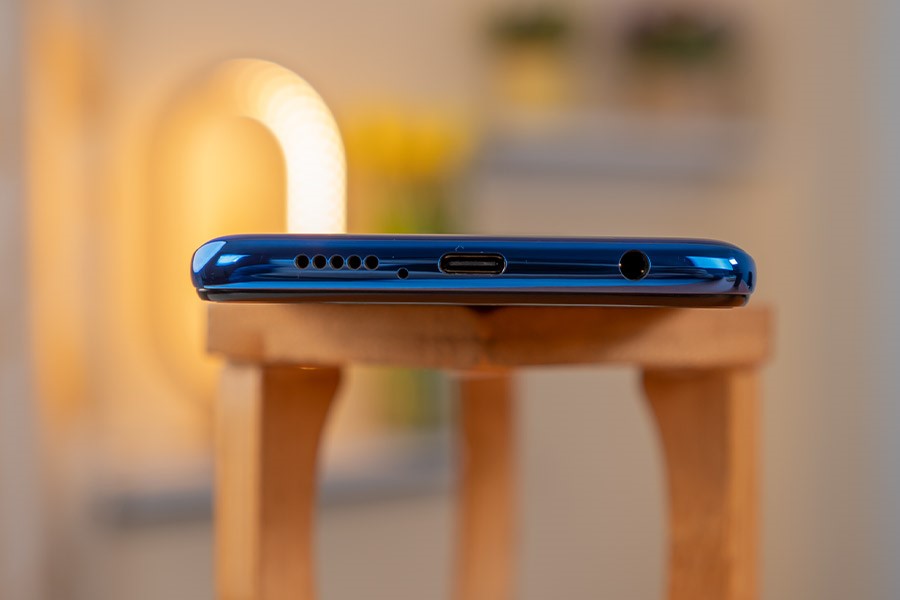


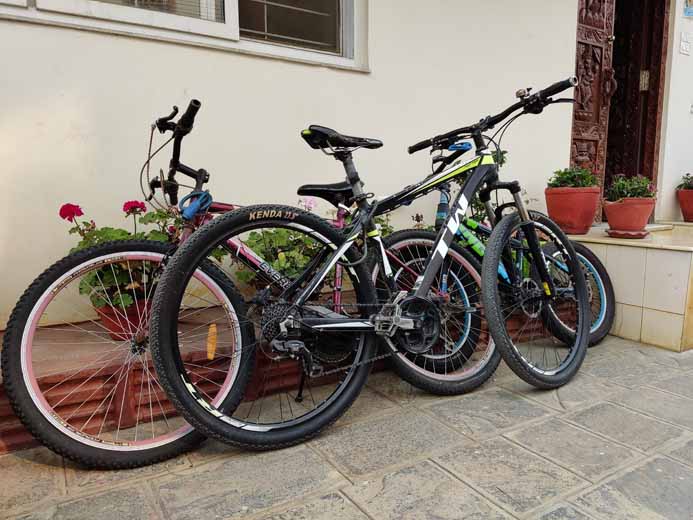
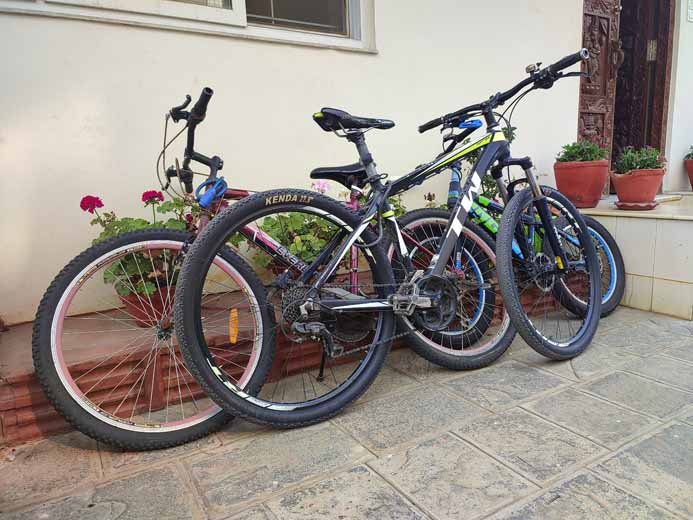






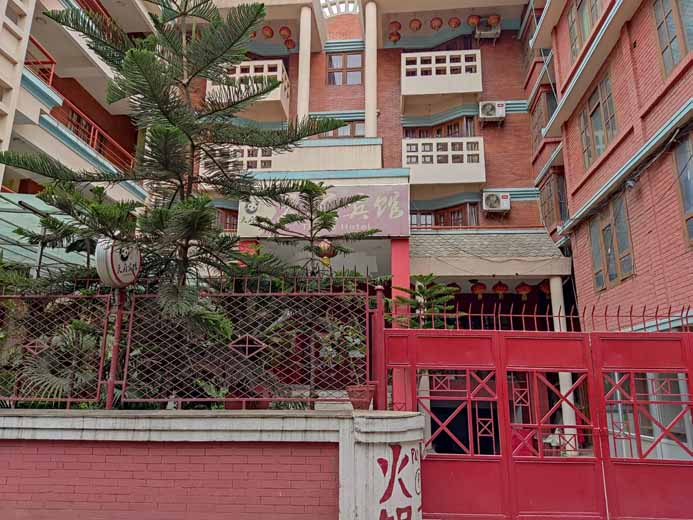

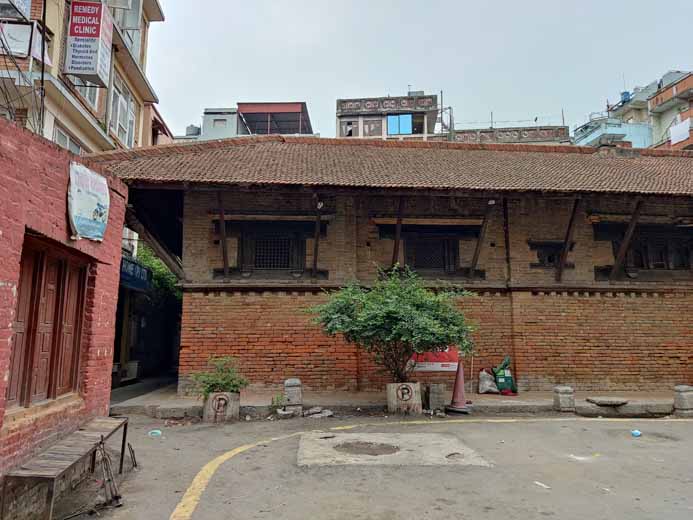











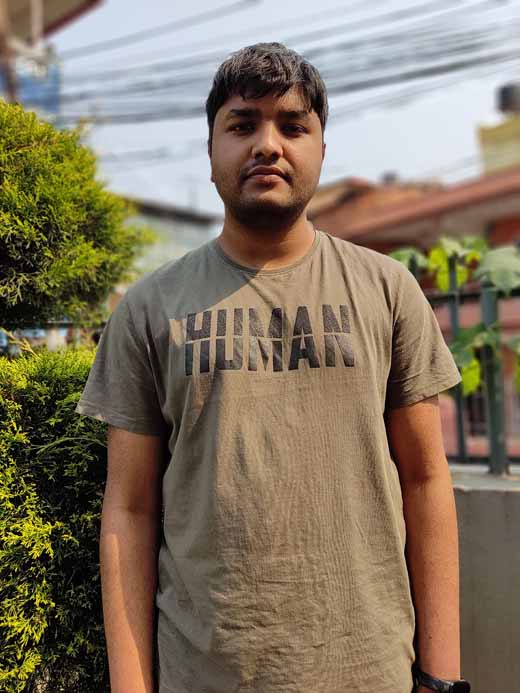







































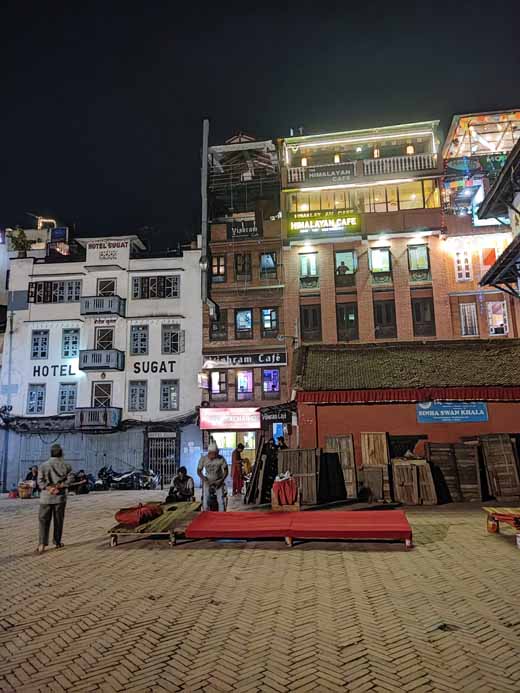
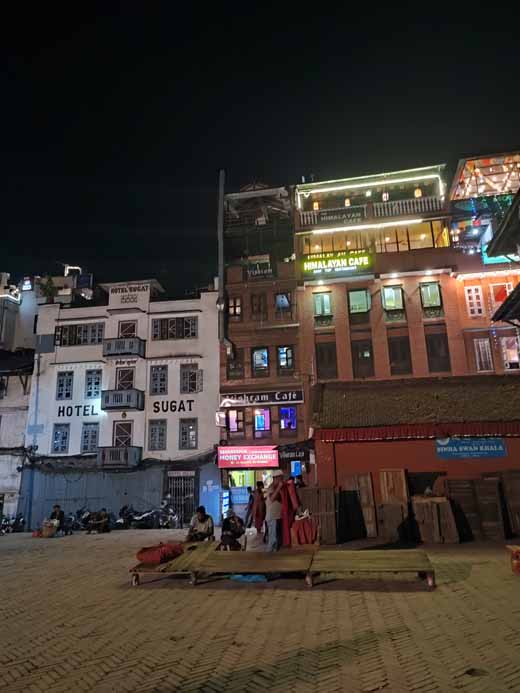



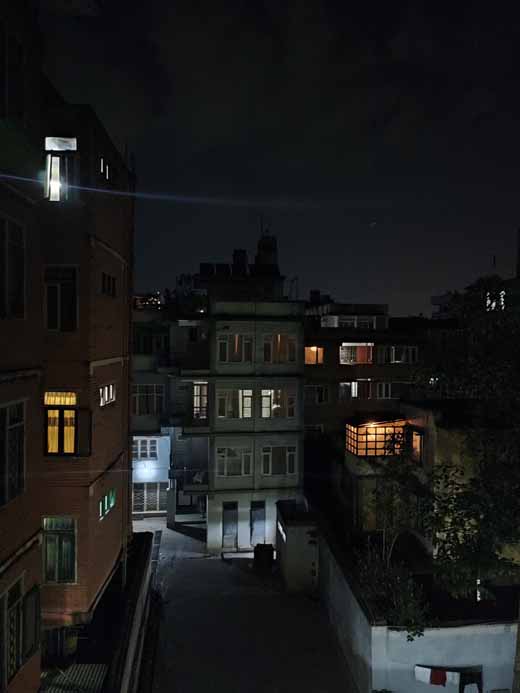




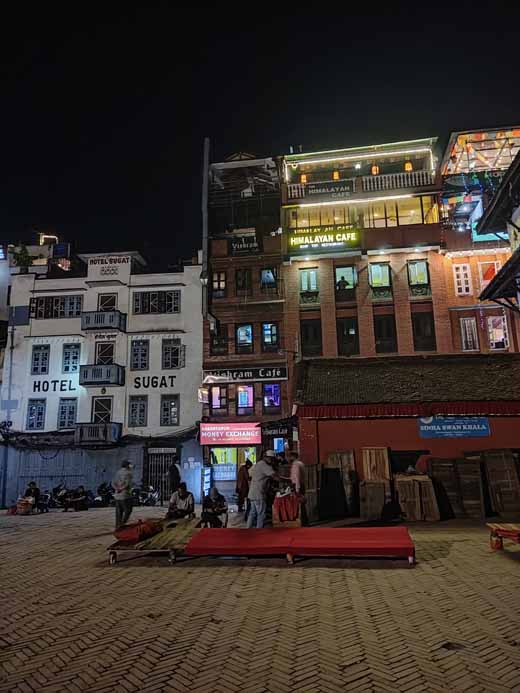












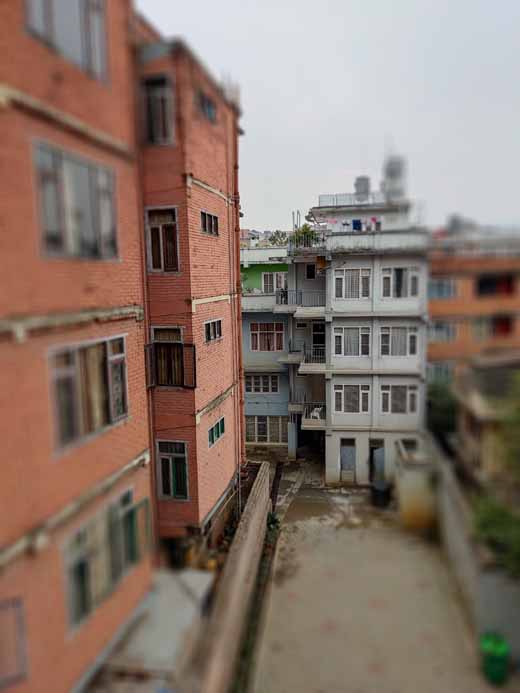





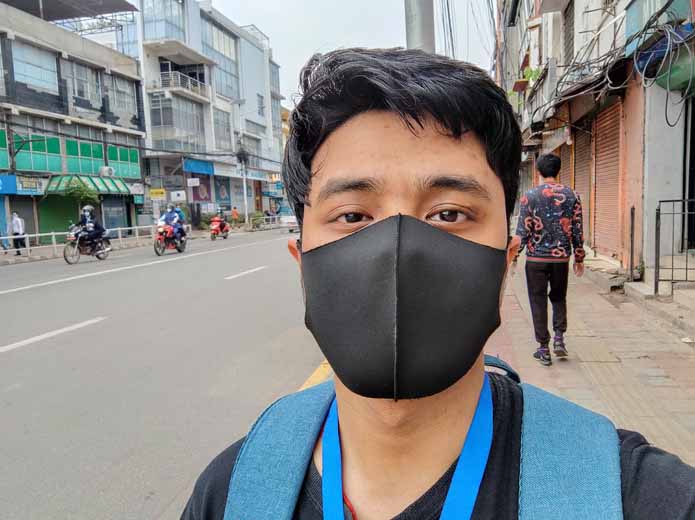
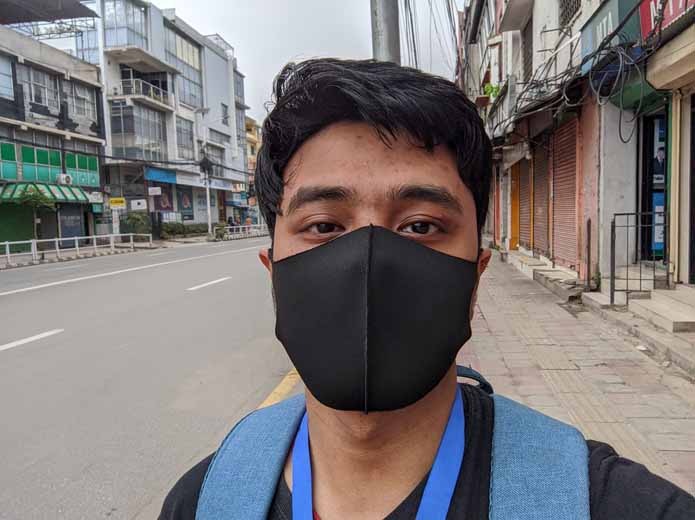
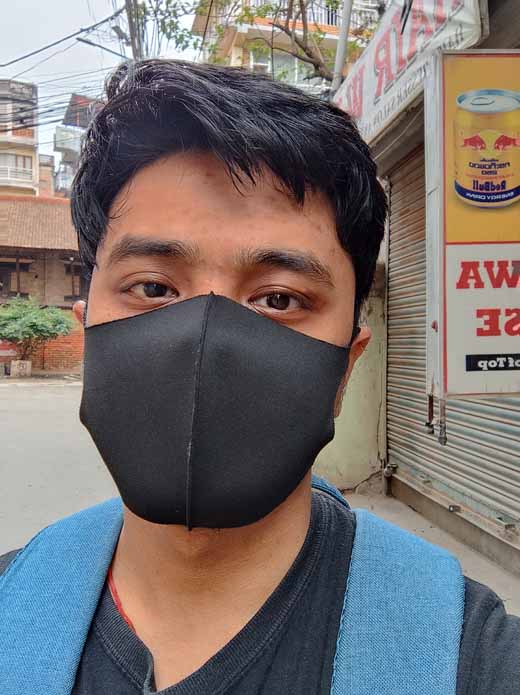
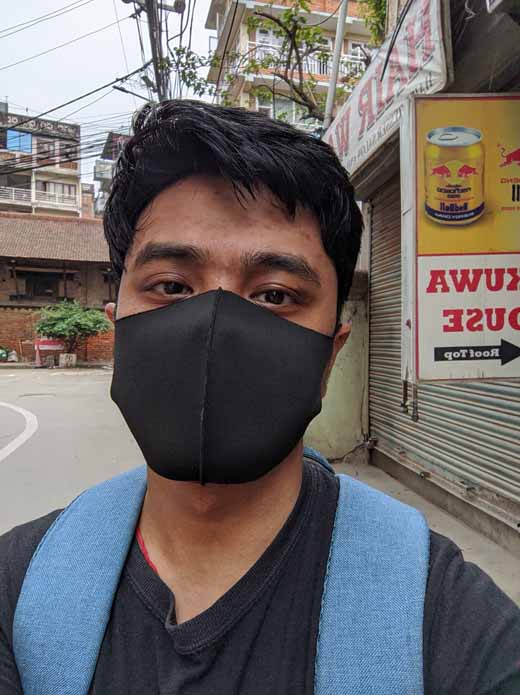





![Best Ultrabooks To Buy in Nepal 2024 [Updated] Best Ultrabook Laptops in Nepal 2023 - June Update](https://cdn.gadgetbytenepal.com/wp-content/uploads/2023/04/Best-Ultrabook-Laptops-in-Nepal-2023-June-Update.jpg)
![Best Gaming Laptops in Nepal 2024 [Updated] Best Gaming Laptops in Nepal 2023 - June Update](https://cdn.gadgetbytenepal.com/wp-content/uploads/2023/04/Best-Gaming-Laptops-in-Nepal-2023-June-Update.jpg)


![Best Mobile Phones Under Rs. 15,000 in Nepal [Updated] Best Phones Under 15000 in Nepal 2024 Budget Smartphones Cheap Affordable](https://cdn.gadgetbytenepal.com/wp-content/uploads/2024/03/Best-Phones-Under-15000-in-Nepal-2024.jpg)
![Best Mobile Phones Under Rs. 20,000 in Nepal [Updated] Best Mobile Phones Under NPR 20000 in Nepal 2023 Updated Samsung Xiaomi Redmi POCO Realme Narzo Benco](https://cdn.gadgetbytenepal.com/wp-content/uploads/2024/01/Best-Phones-Under-20000-in-Nepal-2024.jpg)
![Best Mobile Phones Under Rs. 30,000 in Nepal [Updated]](https://cdn.gadgetbytenepal.com/wp-content/uploads/2023/12/Best-Phones-Under-30000-in-Nepal-2024.jpg)
![Best Mobile Phones Under Rs. 40,000 in Nepal [Updated] Best Phones Under 40000 in Nepal 2024 Smartphones Mobile Midrange](https://cdn.gadgetbytenepal.com/wp-content/uploads/2024/02/Best-Phones-Under-40000-in-Nepal-2024.jpg)
![Best Mobile Phones Under Rs. 50,000 in Nepal [Updated] Best Phones Under 50000 in Nepal 2024 Smartphones Midrange](https://cdn.gadgetbytenepal.com/wp-content/uploads/2024/02/Best-Phones-Under-50000-in-Nepal-2024.jpg)
![Best Flagship Smartphones To Buy In Nepal [Updated] Best Smartphones in Nepal 2024 Flagship Premium Samsung Apple iPhone Xiaomi OnePlus Honor](https://cdn.gadgetbytenepal.com/wp-content/uploads/2023/09/Best-Smartphones-in-Nepal-2024.jpg)